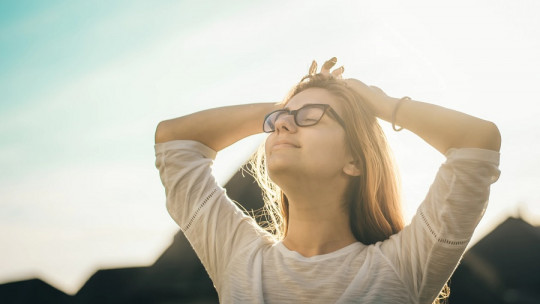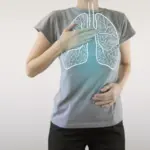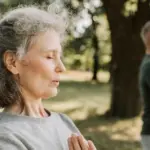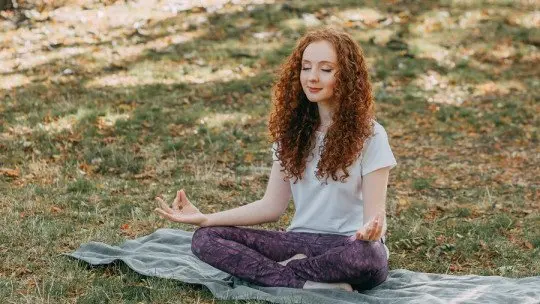
Diaphragmatic or abdominal breathing It is a type of breathing in which the diaphragm muscle is used primarily to breathe.
In addition to being a type of breathing, it is also a relaxation technique, especially used in cases of panic disorder, other anxiety disorders or anxiety in general.
In this article we tell you what this technique consists of, what it can be used for, what are the steps to follow to carry it out and what are its main advantages.
Diaphragmatic breathing (as a relaxation technique)
Diaphragmatic breathing, also called abdominal breathing, is a relaxation technique widely used in cases of people suffering from panic disorder, as well as other anxiety disorders.
Diaphragmatic breathing consists of deep and conscious breathing, which involves mainly using the diaphragm to breathe (although logically many other muscles and/or organs are participating in this physiological process). The diaphragm is a wide muscle located between the pectoral and abdominal cavities
In this type of breathing, the area that works the most in our body is the lower part of the lungs, which connect with the diaphragm and the abdomen. Thus, although technically the abdomen is not what “breathes”, this type of breathing receives this nomenclature.
Through diaphragmatic breathing, the lungs fill with air, which reaches the lower part of the lungs, as we have seen. Thanks to that, better ventilation occurs in the body, we can capture more oxygen and better cleaning occurs in the exhalation process.
Importance of the diaphragm
We have seen the importance of the diaphragm in this type of breathing; The key is to learn to be aware of its movement (since whenever we breathe, we unconsciously move the diaphragm), and to control it, intervening on it.
Activation of the parasympathetic nervous system
At a neurophysiological level, diaphragmatic breathing activates the parasympathetic nervous system (SNP); Let us remember that this system is what forms, together with the sympathetic nervous system, the autonomic nervous system (ANS).
The ANS (also called the neurovegetative or visceral nervous system) is the one that controls the involuntary functions of the viscera, that is, heart rate, respiratory function, digestion, salivation, sweating, urination…
For its part, the parasympathetic nervous system is what allows us to return to a state of rest after a moment or period of stress (on the other hand, the sympathetic nervous system is what activates us and “gets us going” in a stressful moment ).
Through the SNP, we emit relaxation responses through the regulation of different systems and devices such as: the digestive system, the cardiovascular system, the genitourinary system…
In this sense, the PNS allows our heart rate to slow down, we salivate more, our breathing slows down… in short, we relax.
Utilities of the technique
Diaphragmatic breathing as a relaxation technique can help us overcome panic disorder In addition, it is a technique that we can use when we feel anxious or excessively nervous, which can help us breathe more easily, inhaling more air.
Thus, its main use is to promote relaxation, which can indirectly improve other areas of our life (for example, it can make us more active and exercise more, feel a greater sense of well-being, concentrate better, etc. .).
How to practice it (steps)
As a breathing technique, diaphragmatic breathing involves the following: It involves the person (or patient) learning to breathe with the diaphragm (that is, with the abdomen or belly) instead of with the chest.
Thus, the person is taught to control breathing through the relaxation of your abdominal muscles and the contraction of the diaphragm, relaxing the intercostal muscles
Through diaphragmatic breathing, an abdominal breathing exercise is performed. But what exactly does this consist of? Let’s learn the steps necessary to carry out this relaxation technique:
1. Get comfortable
First of all, we will sit in a chair that is comfortable for us (we can also choose to lie on our back, with a pillow under our head). In both cases, but It is important that our back is supported
2. Place your hands
The second step of diaphragmatic breathing is to place your hands; one on the chest, and one on the abdomen (the abdomen is located just above the stomach).
3. Inhale
We will start by taking air through the nose slowly and deeply While we perform this action, we must count to three (there are variants of the technique where we count to two), trying to fill all the lungs, while observing how the abdomen comes out.
We will see how, as we inhale the air, our hand rises slightly (because the abdomen “rises”, it swells). It is important here to keep the chest still.
4. Take a break
In the next step of this diaphragmatic breathing exercise, we will take a short pause, which will last a few seconds.
5. Exhale
Next, we will proceed to release the air through your mouth slowly while counting to three ; We will do it by expelling the air with our lips together and almost closed. Immediately we will notice how the abdomen draws inward (the stomach sinks).
Sequence
We will follow the following sequence: inhale for a count of three, and exhale for a count of three (there are variants in which we inhale for a count of two, and exhale for a count of four, it all depends on our needs and preferences).
Through these sequences, we will achieve slow, deep and even breathing.
6. Practice
The last step of diaphragmatic breathing involves practicing. At first, The ideal is to practice the technique for five or ten minutes every day, three or four times a day
As we internalize it, we can and should increase the time and frequency of daily practice.
Advantages of diaphragmatic breathing
What are the advantages of using diaphragmatic breathing as a relaxation technique? Logically, its main advantage is that it can help us overcome a panic disorder, as well as some other anxiety disorder. **
However, if we also use this type of breathing in our daily lives, and/or in situations of stress or anxiety, the advantages we can obtain from it are even more numerous:








